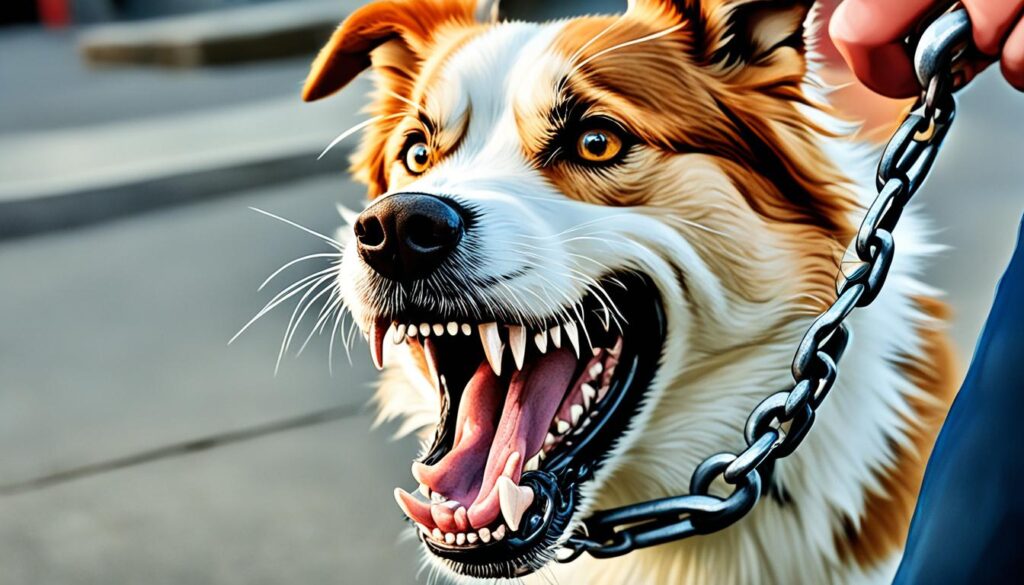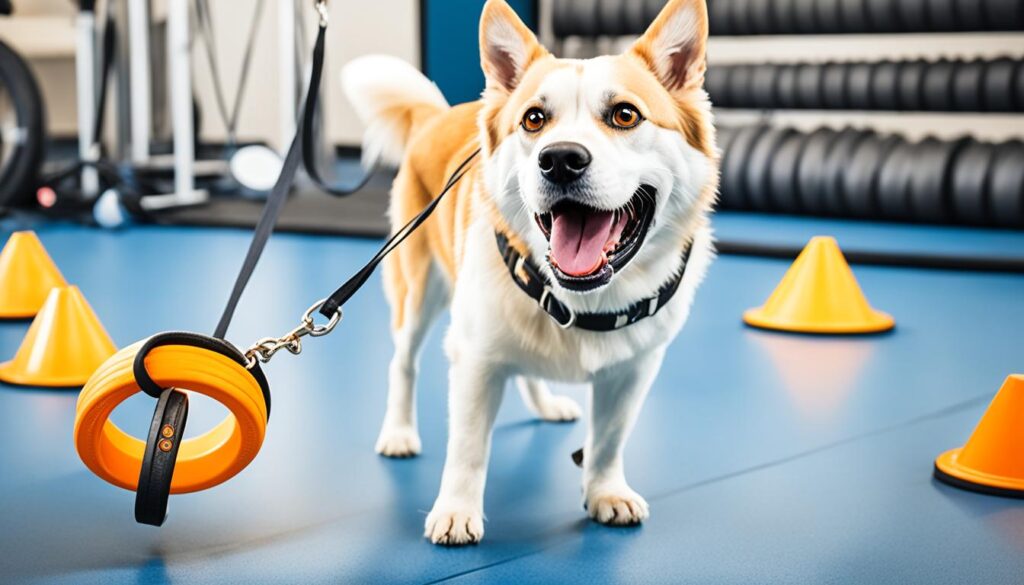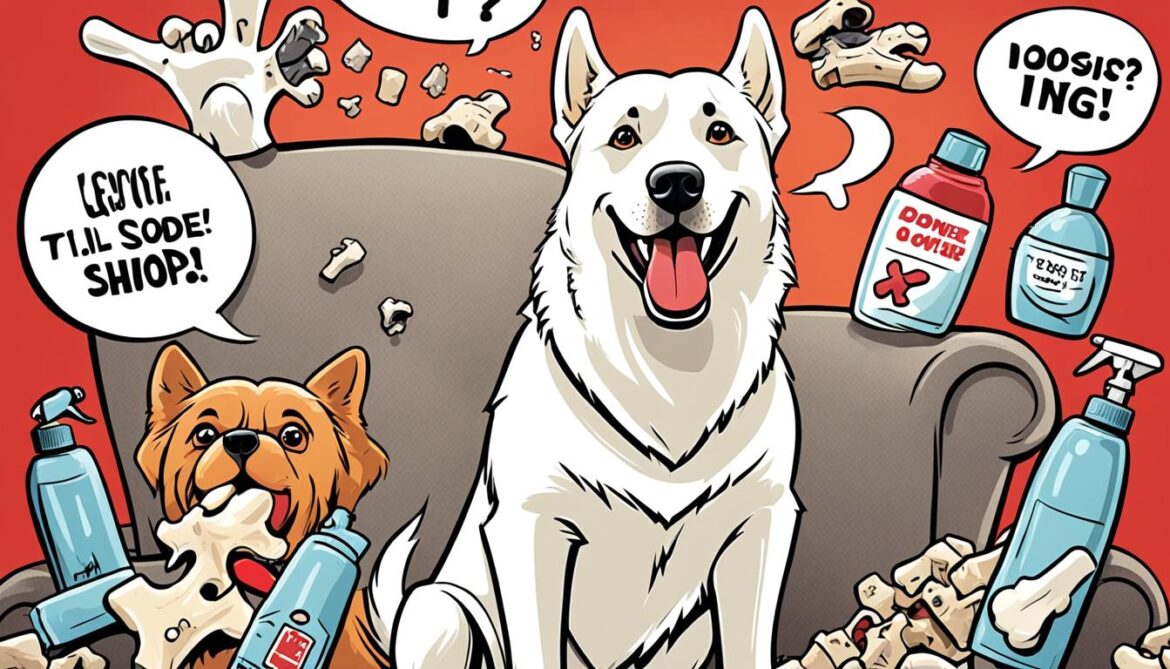Is your furry friend displaying aggressive biting behavior? Are you tired of constant nips and bites from your dog? It’s time to put an end to this behavior and create a safe and harmonious environment for both you and your pet. But how can you effectively prevent dog bites and correct your dog’s biting behavior?
In this article, we will delve into the world of dog behavior training and provide you with proven tips to stop your dog from biting. From understanding why dogs bite to training techniques for bite inhibition and addressing aggressive biting behavior, we’ve got you covered.
Key Takeaways:
- Understanding the reasons behind dog bites is crucial in preventing and addressing biting behavior.
- Training techniques such as positive reinforcement and redirecting biting behavior onto appropriate toys can help teach bite inhibition.
- Dealing with aggressive biting behavior may require professional assistance and behavior modification techniques.
- Consistency, patience, and positive reinforcement are key to successfully stopping your dog from biting.
- Early training and socialization play a vital role in preventing puppy biting.
Understanding Why Dogs Bite
When it comes to dog aggression training, understanding why dogs bite is crucial. By delving into the underlying causes of biting behavior, you can better address and prevent it. Dogs may resort to biting due to various factors, including fear, territoriality, and aggression.
Fear: Dogs may bite when they feel threatened or fearful. This can happen if they perceive a person or situation as dangerous or intimidating. Understanding your dog’s triggers and gradually exposing them to positive experiences can help reduce fear-based biting.
Territoriality: Dogs are naturally protective of their space and belongings. If they perceive someone as encroaching on their territory, they may resort to aggressive behavior, including biting. Proper training and early socialization can effectively address territorial aggression.
Aggression: Some dogs have a predisposition towards aggression, which can manifest in biting behavior. Aggressive biting may occur due to genetic factors, improper breeding, or previous negative experiences. Professional intervention and specialized training techniques are crucial in managing and redirecting aggressive behavior.
“Understanding the reasons behind dog biting behavior is essential in addressing and preventing it effectively. By identifying the root causes, you can tailor your approach to training and eliminate potential triggers.”
Remember, each dog is unique, and their biting behavior may stem from a combination of these factors. Seeking guidance from a professional dog trainer or behaviorist can provide valuable insights specific to your dog’s needs.

Why Training is Essential for Biting Dogs
Training plays a vital role in managing and preventing biting behavior in dogs. Proper training techniques help them develop bite inhibition, teaching them to control the force of their bite. With consistent training and positive reinforcement, dogs can learn appropriate outlets for their energy and avoid resorting to biting as a form of communication or defense.
Additionally, training promotes socialization, helping dogs become comfortable around people and other animals. This reduces fear-based triggers and the likelihood of biting in stressful situations. Through training, dogs learn to respond to commands, redirect their behavior, and build a strong bond with their owners.
In the next section, we will delve into effective training techniques for bite inhibition, providing you with practical strategies to train your dog against biting behavior.
Training Techniques for Bite Inhibition
Teaching your dog bite inhibition is an essential part of preventing biting behaviors. By employing effective training techniques, you can ensure that your dog learns to control the force of their bites and interacts with others in a safe and gentle manner. In this section, we will explore three key methods for achieving bite inhibition: positive reinforcement, socialization, and redirecting biting behavior onto appropriate toys.
1. Positive Reinforcement
Positive reinforcement is a powerful tool for teaching dogs new behaviors. When it comes to bite inhibition, it is important to reward your dog for exhibiting gentle mouth behaviors, such as licking or soft mouthing. Whenever your dog engages in these behaviors, provide verbal praise, gentle strokes, or even small treats as positive reinforcement. This helps them associate gentle actions with positive outcomes, encouraging them to use their mouths more gently in the future.
2. Socialization
Socialization plays a crucial role in the development of a well-behaved and well-adjusted dog. By exposing your dog to a variety of people, animals, and environments, you can help them learn appropriate boundaries and reduce the likelihood of biting out of fear or anxiety. Gradually introduce your dog to new experiences, ensuring positive interactions and using treats or praise to reinforce calm and non-aggressive behavior.
3. Redirecting Biting Behavior
Dogs have a natural instinct to chew and bite, but it is important to redirect this behavior onto appropriate toys. When your dog starts to bite, firmly say “no” and immediately offer them a durable chew toy or specially designed teething toy. This redirects their attention and provides them with an acceptable outlet for their biting impulses. Be consistent in reinforcing this behavior, and gradually increase the duration of playtime with appropriate toys to discourage biting unwanted objects or people.
By combining these training techniques, you can effectively teach your dog bite inhibition and reduce biting incidents. Remember to be patient and consistent in your approach, as it may take time for your dog to learn and adjust their behavior. Celebrate their progress and always reward positive behavior, reinforcing the importance of gentle mouth interactions.
| Training Techniques for Bite Inhibition | Benefits |
|---|---|
| Positive Reinforcement |
|
| Socialization |
|
| Redirecting Biting Behavior |
|
Addressing Aggressive Biting Behavior
If your dog exhibits aggressive biting behavior, it’s crucial to address the issue promptly to ensure the safety of both you and your pet. Seeking professional help and implementing behavior modification techniques can make a significant difference in managing and reducing aggression.
The Importance of Professional Help
Dealing with aggression requires the expertise of a professional dog trainer or behaviorist. They have the knowledge and experience to assess the root causes of aggression, develop a customized plan, and guide you through the training process. A professional can provide you with the necessary tools and techniques to address the aggression effectively while ensuring the well-being of your dog.
Behavior Modification Techniques
Behavior modification plays a key role in addressing aggressive biting behavior. This involves identifying triggers that may spark aggression and gradually desensitizing your dog to those triggers. Positive reinforcement techniques are commonly used, rewarding your dog for calm and non-aggressive behaviors. Consistency is essential throughout the training process to reinforce positive behaviors and discourage aggressive tendencies.
“Biting is often a symptom of an underlying issue, such as fear or insecurity. By addressing the root cause through behavior modification, you can help your dog overcome aggression and develop healthier coping mechanisms.”
Creating a Safe Environment
Creating a safe environment is crucial for managing aggressive biting behavior. This includes ensuring your dog has a comfortable and secure space to retreat to when feeling overwhelmed, as well as removing any potential triggers or stimuli that may incite aggression. Establish clear boundaries and rules within your household, providing consistency and structure to help your dog feel secure and reduce stress.

Remember, addressing aggressive biting behavior requires patience, consistency, and professional guidance. By understanding the underlying causes of aggression and implementing effective training techniques, you can help your dog overcome their aggressive tendencies and create a safe and harmonious environment for everyone involved.
Conclusion
Stopping your dog from biting is an important aspect of training and ensuring a safe and harmonious relationship with your furry companion. By following these dog training tips, you can effectively prevent puppy biting and address aggressive biting behavior.
Consistency is key when training your dog. Set clear boundaries and rules from the start, and enforce them consistently. Provide positive reinforcement by rewarding good behavior with treats and praise. This will help your dog understand what is expected of them and encourage them to engage in appropriate behaviors.
Patience is another crucial element in the training process. Remember that dogs learn at their own pace, and it may take time for them to fully grasp new behaviors and habits. Be patient with your furry friend and avoid resorting to punishment, as this can often lead to fear and aggression.
Early training is essential for preventing puppy biting. Start training your dog as soon as you bring them home. Teach them bite inhibition by redirecting their biting onto appropriate toys and encouraging gentle play. Socialize your dog with other animals and humans to help them develop proper behavior and reduce fear or aggression.
Remember, stopping your dog from biting takes time, effort, and consistency. By implementing these dog training tips and techniques, you can create a well-behaved and well-adjusted canine companion, ensuring a happy and safe environment for everyone.
FAQ
How can I stop my dog from biting?
To prevent dog bites, it’s important to train your dog not to bite. Use positive reinforcement techniques such as rewards, treats, and praise to encourage good behavior. Additionally, provide plenty of mental and physical stimulation to keep your dog engaged and prevent boredom, which can lead to biting.
Why do dogs bite?
Dogs may bite due to fear, territoriality, or aggression. It’s essential to understand the underlying cause of your dog’s biting behavior to effectively address and prevent it. If you’re unsure, consult a professional dog trainer or behaviorist for guidance.
How can I teach my dog not to bite?
One technique to teach your dog bite inhibition is to use redirection. When your dog starts biting, immediately replace your hand or body part with an appropriate chew toy. Reward your dog for chewing on the toy instead of biting you. Consistency and patience are key to successfully teaching your dog not to bite.
What should I do if my dog shows aggressive biting behavior?
If your dog exhibits aggressive biting behavior, it’s crucial to seek professional help from a certified dog trainer or behaviorist. They can evaluate your dog’s behavior and create a tailored plan to address the aggression. In the meantime, it’s essential to create a safe environment by keeping your dog away from potential triggers and avoiding situations that may provoke aggression.
Any additional tips for preventing puppy biting?
When it comes to preventing puppy biting, consistency is key. Provide your puppy with appropriate chew toys and discourage biting on your hands or clothes by redirecting them to the toys. It’s also essential to socialize your puppy with other dogs and people to teach them proper bite inhibition. Remember to be patient with your puppy’s learning process, as it takes time for them to develop appropriate behavior.
